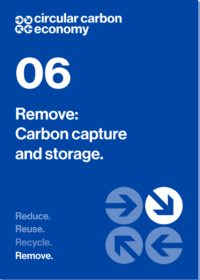Resources
Publications
Our publications, reports and research library hosts over 500 specialist reports and research papers on all topics associated with CCS.
View our Publication Library Disclaimer.
Filter by
Fifty years ago this summer in the small town of Terrell, Texas, construction began on a new type of technological innovation called carbon capture and storage (CCS). The facility that would host this novelty was a natural gas processing plant that used pre-combustion carbon dioxide capture technology to separate anthropogenic CO2 from its natural gas processing steps before transporting it to an oil field for enhanced oil recovery (EOR) and storage. From that first facility to today, the term “CCS” has grown to encompass a global industry, with 26 CCS facilities currently in operation around the world that have safely captured and stored 300 million metric tonnes of CO2.
In a new paper published in Volume 34, Issue 7 of the Electricity Journal, Lessons captured from 50 years of CCS projects, authors Patricia Loria and Matt Bright give a history of the CCS industry and examine the lessons learned from the deployment of the current 26 operational facilities. Project developers contribute their insights, and the main opportunities and challenges are condensed to help guide the deployment of more CCS projects around the globe. Moreover, the paper highlights the work of the Global CCS Institute over the past eleven years in tracking projects through its CO2RE database. The most important conclusion is that the 26 operational CCS facilities demonstrate that the technology has successfully been deployed to scale and can safely capture and store CO2 critical for the success of any global climate change mitigation strategy.
The Global CCS Institute was invited to contribute this article to a special August, 2021 issue of the Electricity Journal focusing on CCS. The issue comprises 7 other articles from leading NGOs and researchers in the field of CCS.
Disclaimer
The content within the Global CCS Institute Publications, Reports and Research Library is provided for information purposes only. We make every effort and take reasonable care to keep the content of this section up-to-date and error-free. However, we make no claim as to its accuracy, currency or reliability.
Content and material featured within this section of our website includes reports and research published by third parties. The content and material may include opinions and recommendations of third parties that do not reflect those held by the Global CCS Institute.
Unlocking Private Finance to Support CCS Investments
28th June 2021
Topic(s): CCS finance, CCS policy, Thought Leadership
One model aligned with the goals of the Paris Agreement, the International Energy Agency's Sustainable Development Scenario (IEA-SDS) requires 15% of the world’s emissions reductions to be achieved using CCS. The need for CCS in the IEA-SDS translates to a 100-fold increase in CCS capacity by 2050, for which this thought leadership report estimates the total capital requirement to be between US$655 bn and US$1,280 bn.
The report discusses the role of governments in creating an enabling investment environment for CCS and makes several recommendations for how to unlock private finance for projects.
The report examines:
- The potential for project finance to greatly accelerate investment in CCS capacity
- The application of green bonds to CCS projects in hard-to-abate sectors such as cement, fertilisers and chemicals
- The potential for climate finance to support CCS deployment in developing countries
Disclaimer
The content within the Global CCS Institute Publications, Reports and Research Library is provided for information purposes only. We make every effort and take reasonable care to keep the content of this section up-to-date and error-free. However, we make no claim as to its accuracy, currency or reliability.
Content and material featured within this section of our website includes reports and research published by third parties. The content and material may include opinions and recommendations of third parties that do not reflect those held by the Global CCS Institute.
Surveying the U.S. Federal CCS Policy Landscape in 2021
4th May 2021
Topic(s): Carbon capture and storage (CCS), CCS policy, Domestic policy, Policy law and regulation
2021 is proving to be a busy year for CCS policy in the United States. With the year not yet one third over, Members of the House of Representatives and Senate had already introduced five bipartisan bills that aim to accelerate the deployment of CCS. This brief details the contents of those bills and explains the rationale behind their policy proposals.
More broadly, though, Senior Advocacy & Communications Adviser, Matt Bright, uses this brief to examine the three pillars of CCS policy that undergird the advance of this technology in the U.S. In addition, this brief gives the reader a grand tour of U.S. CCS policy history from its inception to the present day in order to paint a complete picture of how strong policy can accelerate the deployment of CCS. In this way, the U.S. CCS policy landscape can be viewed as a lens to magnify the challenges and opportunities that lie ahead for global CCS deployment in the coming decades.
Disclaimer
The content within the Global CCS Institute Publications, Reports and Research Library is provided for information purposes only. We make every effort and take reasonable care to keep the content of this section up-to-date and error-free. However, we make no claim as to its accuracy, currency or reliability.
Content and material featured within this section of our website includes reports and research published by third parties. The content and material may include opinions and recommendations of third parties that do not reflect those held by the Global CCS Institute.
For CCS to fulfill its potential in reducing significant global emissions, this technology must be deployed in all parts of the world. Yet there are currently very few CCS projects in developing countries.
This report was commissioned by ClearPath and Southern Company to examine the role of climate finance in supporting CCS project development in developing countries.
It investigates:
- The support afforded to existing CCS facilities;
- Reasons for the lack of deployment in developing countries;
- How to overcome CCS investment risks; and
- Relevant global climate finance mechanisms to support the deployment of more facilities.
It was found that while there is a very high need for CCS in several developing countries, their level of readiness for CCS deployment is low. Climate finance has an important role to play in both, improving their level of readiness as well as closing the funding gap in developing CCS projects.
Disclaimer
The content within the Global CCS Institute Publications, Reports and Research Library is provided for information purposes only. We make every effort and take reasonable care to keep the content of this section up-to-date and error-free. However, we make no claim as to its accuracy, currency or reliability.
Content and material featured within this section of our website includes reports and research published by third parties. The content and material may include opinions and recommendations of third parties that do not reflect those held by the Global CCS Institute.
The urgency of reaching net-zero emissions requires a rapid acceleration in the deployment of all emissions reducing technologies. Near-zero emissions hydrogen (clean hydrogen) has the potential to make a significant contribution to emissions reduction in the power generation, transportation, and industrial sectors.
As part of the Circular Carbon Economy: Keystone to Global Sustainability series with the Center on Global Energy Policy at Columbia University SIPA, this report explores the potential contribution of blue hydrogen to climate mitigation.
The report looks at:
- Cost drivers for renewable hydrogen and hydrogen produced with fossil fuels and CCS;
- Resource requirements and cost reduction opportunities for clean hydrogen; and
- Policy recommendations to drive investment in clean hydrogen production.
Blue hydrogen is well placed to kickstart the rapid increase in the utilisation of clean hydrogen for climate mitigation purposes but requires strong and sustained policy to incentivise investment at the rate necessary to meet global climate goals.
Disclaimer
The content within the Global CCS Institute Publications, Reports and Research Library is provided for information purposes only. We make every effort and take reasonable care to keep the content of this section up-to-date and error-free. However, we make no claim as to its accuracy, currency or reliability.
Content and material featured within this section of our website includes reports and research published by third parties. The content and material may include opinions and recommendations of third parties that do not reflect those held by the Global CCS Institute.
Technology Readiness and Costs of CCS
29th March 2021
Topic(s): Carbon capture and storage (CCS), Technology readiness
Carbon Capture and Storage (CCS) are essential technologies to help achieve net zero ambitions. The cost of deployment of CO2 capture, transport and storage systems is of vital economic and environmental importance. This importance will continue to increase as the scale and breadth of CCS deployment grows around the world.
As part of the Circular Carbon Economy: Keystone to Global Sustainability series with Columbia University's SIPA Center on Global Energy Policy, this report examines CCS technology from two perspectives: technology readiness and factors influencing costs.
Key drivers of CCS cost include:
- Economies of scale;
- Partial pressure of CO2 in the source gas;
- Energy costs; and
- Technological innovation.
Mature and emerging technologies in carbon capture, transport and storage are surveyed for technological readiness. Technological development will be a key element of driving future cost reductions in CCS and applying CCS to hard-to-abate sectors such as cement, steel and direct air capture.
Disclaimer
The content within the Global CCS Institute Publications, Reports and Research Library is provided for information purposes only. We make every effort and take reasonable care to keep the content of this section up-to-date and error-free. However, we make no claim as to its accuracy, currency or reliability.
Content and material featured within this section of our website includes reports and research published by third parties. The content and material may include opinions and recommendations of third parties that do not reflect those held by the Global CCS Institute.
Carbon Removal with CCS Technologies
26th January 2021
Topic(s): Carbon capture and storage (CCS), Carbon removal, CCS policy, Negative emissions technologies, Policy law and regulation
With the transition to a low-carbon economy steadily underway, CCS is becoming recognised as a tool that complements the wide array of climate approaches being utilised to reach climate neutrality. The role of emission reductions and removals in the mitigation of climate change will change over time. It is widely agreed that emission reductions should be prioritised on the pathway to net zero. This, however, will change once net zero emissions are achieved; net zero is a point on the journey, not the final destination. Carbon removal will become the main driver of climate ambition in the second half of the century.
In this brief, Senior Policy Advisor with the Global CCS Institute, Eve Tamme, explains the dual role of CCS in climate change mitigation, and provides an overview of the two technological carbon removal approaches that use CCS: bioenergy with carbon capture and storage (BECCS) and direct air capture with carbon storage (DACCS). Along with highlighting the varied applications of CCS, this brief also includes a summary of ongoing challenges and opportunities tied to carbon removal related policy development.
Disclaimer
The content within the Global CCS Institute Publications, Reports and Research Library is provided for information purposes only. We make every effort and take reasonable care to keep the content of this section up-to-date and error-free. However, we make no claim as to its accuracy, currency or reliability.
Content and material featured within this section of our website includes reports and research published by third parties. The content and material may include opinions and recommendations of third parties that do not reflect those held by the Global CCS Institute.
The Global Status of CCS report illustrates the critical role carbon capture and storage technology plays in reducing industrial emissions and documents the current and ongoing CCS efforts being undertaken to tackle climate change.
This newly released Global Status of CCS Factsheet highlights measures government and industry can take to achieve cost-effective net-zero emissions through CCS and also points to key milestones reached in the CCS space over the last year.
Download the Global Status of CCS Factsheet below:
- Global Status of CCS - Factsheet - English
- Global Status of CCS - Factsheet - Japanese
- Global Status of CCS - Factsheet - Arabic
- Global Status of CCS - Factsheet - Chinese
Disclaimer
The content within the Global CCS Institute Publications, Reports and Research Library is provided for information purposes only. We make every effort and take reasonable care to keep the content of this section up-to-date and error-free. However, we make no claim as to its accuracy, currency or reliability.
Content and material featured within this section of our website includes reports and research published by third parties. The content and material may include opinions and recommendations of third parties that do not reflect those held by the Global CCS Institute.
The Global Status of CCS Report 2020 demonstrates the vital role of carbon capture and storage technologies (CCS) in reducing emissions to net-zero by 2050 as well as documenting the current status and important milestones for the technology over the past 12 months.
The report provides detailed information on and analyses of the global CCS facility pipeline, international policy perspectives, CO2 storage and the CCS legal and regulatory environment. In addition, four regional updates provide further detail about CCS progress across the Americas, Europe, Asia Pacific and the Gulf Cooperation Council States and a Technology section provides updates on key innovations and applications of CCS.
Disclaimer
The content within the Global CCS Institute Publications, Reports and Research Library is provided for information purposes only. We make every effort and take reasonable care to keep the content of this section up-to-date and error-free. However, we make no claim as to its accuracy, currency or reliability.
Content and material featured within this section of our website includes reports and research published by third parties. The content and material may include opinions and recommendations of third parties that do not reflect those held by the Global CCS Institute.
Replacing 10% of NSW Natural Gas Supply with Clean Hydrogen: Comparison of Hydrogen Production Options
17th November 2020
Organisation(s): Global CCS Institute
Topic(s): Australia, Carbon capture and storage (CCS), Hydrogen
Clean hydrogen is produced by either using renewable energy to produce green hydrogen, or by using fossil fuels with carbon capture and storage (CCS) to create blue hydrogen.
As part of determining the most cost-effective method of creating clean hydrogen, Coal Innovation NSW (CINSW) commissioned the Global CCS Institute to investigate the production costs of replacing 10 per cent of NSW’s natural gas supply with clean hydrogen.
The study considers a scenario where sufficient clean hydrogen is produced to achieve a 10% H2:90% CH4 (natural gas) mix by volume in the NSW gas network and supply the same total energy as is currently supplied by natural gas alone. Options considered were reformation of natural gas with carbon capture and storage (CCS), coal gasification with CCS, and electrolysis of water using renewable electricity. The study found that the best option for the production of clean hydrogen in NSW considering cost, scale, resource use, and emissions abatement outcomes is to utilise coal or gas with CCS.
See NSW Government for further information
Disclaimer
The content within the Global CCS Institute Publications, Reports and Research Library is provided for information purposes only. We make every effort and take reasonable care to keep the content of this section up-to-date and error-free. However, we make no claim as to its accuracy, currency or reliability.
Content and material featured within this section of our website includes reports and research published by third parties. The content and material may include opinions and recommendations of third parties that do not reflect those held by the Global CCS Institute.
Remove: Carbon Capture and Storage
2nd November 2020
Organisation(s): Global CCS Institute
Topic(s): Carbon capture and storage (CCS), CCS policy
Ahead of the 2020 G20 summit, the Global CCS Institute was asked to contribute to the Circular Carbon Economy (CCE) Guide, organised by KAPSARC. In a report titled 'Remove: Carbon Capture and Storage', Alex Zapantis assesses the value of CCS as an effective climate mitigating technology that aims to remove CO2 from the atmosphere and support the establishment of a circular carbon economy.
The report was discussed during a live webinar hosted by KAPSARC.
To read the report in full, click download below.
Disclaimer
The content within the Global CCS Institute Publications, Reports and Research Library is provided for information purposes only. We make every effort and take reasonable care to keep the content of this section up-to-date and error-free. However, we make no claim as to its accuracy, currency or reliability.
Content and material featured within this section of our website includes reports and research published by third parties. The content and material may include opinions and recommendations of third parties that do not reflect those held by the Global CCS Institute.
Environmental, Social and Governance (ESG) Assessments and CCS
16th October 2020
Organisation(s): Global CCS Institute
At the request of the US Department of Energy, The Global CCS Institute undertook an examination of the significance and the extent of the influence of Environmental, Social and Governance (ESG) ratings in supporting investment in CCS project deployment.
The objective of this study was to consider the following five questions:
- How does a company’s ESG rating impact the company?
- How does a company’s CO2 footprint or exposure impact its ESG rating?
- How is CCS considered when the ESG performance of a company with a large CO2 footprint or exposure is rated?
- Do the positive impacts of CCS (if any) on a company’s ESG rating support the business case for investing in or financing CCS?
- How does climate litigation and public policy impact corporate risk and ESG ratings?
The resulting assessment addressed each of these questions, to provide a clearer picture of the complex relationship between the development and scope of ESG ratings, the impacts of a company’s ESG performance and ultimately, whether this will influence future investment in CCS.
Disclaimer
The content within the Global CCS Institute Publications, Reports and Research Library is provided for information purposes only. We make every effort and take reasonable care to keep the content of this section up-to-date and error-free. However, we make no claim as to its accuracy, currency or reliability.
Content and material featured within this section of our website includes reports and research published by third parties. The content and material may include opinions and recommendations of third parties that do not reflect those held by the Global CCS Institute.











